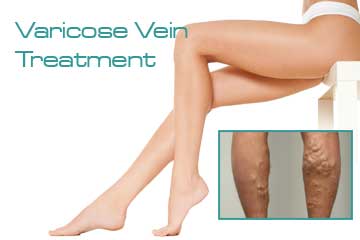- 0224 451 74 34
- 0532 214 02 80
- info@zeynepkirker.com

Varicosis is defined as pooling of blood in particularly leg vessels and these vessels’ becoming evident in time with the effect of gravity as the result of veins’ inability to transfer blood to body.
It results from life style and habits. Negative effects of urban life, namely sedentary life, nutritional habits, drug use lead to development and rapid progression of varicosis alone or in combination with structural factors.
Presence of varicosis in family members and gender are risk factors. Weakness in vessel wall, insufficiency or absence of valves due to genetic factors make some individuals susceptible to varicosis development.
- Venous deformation lead to swelling, fatigue and pain in legs and the disease may progress to secondary diseases if treatment is delayed. Cosmetic concerns and influences of the disease on life style also lead to stress.
- Heavy and tired legs make us tired to walk and we look for some places to rest or legs.
- Swelled legs lead us to feel our legs thicker and swelled
- Veins’ becoming visible makes them to look enlarged, blue-purple, swelled and tense
- Varicosities lead to tingling, restlessness and itching in legs
- Cramps are sudden contractions in leg muscles. This spasm which is very painful usually emerge in the evening.
- Restless leg syndrome is usually seen wit tingling
- Edema leads to swelling and feeling heavy. Joint pain is a pain which occurs in knees and ankles due to standing, moving or touch.
- Capillary dilations in face and legs due to venous insufficiency is evaluated as a health problem and a cosmetic problem. Capillary varicosities which lead to swelling, pain, tingling and tiredness in legs may be treated with laser. Decision for laser treatment should be made after assessment by a doctor.
Laser therapy provides an easy, rapid, effective treatment option without tissue damage. It may also improve skin quality through triggering collagen.
Laser therapy may be applied to vessels smaller than 5 mm.
- PDL Pulsed dye laser 585 nm-Long PDL 595 nm
PDL was begun to be used in 1989. Laser device is the gold standard for treatment of vessels, particularly birth spots. PDL is quite effective in treatment of vascular problems and birth spots in face and neck. However it may be insufficient for treatment of body lesions as it may not effect deep tissues due to short wave length. PDL devices with short shooting time may cause temporal ecchymosis which may last for 7-15 days. Patients may feel disturbed despite high effectiveness. Therefore PDL devices with long shooting time were developed and ecchymosis was minimized.
- KTP laser 532 nm
KTP laser is in 532 nm wave length and effective in vascular treatment. However it may not proceed to deep tissues due to short wave length. It may be used for superficial vascular problems. In addition, 532 nm wave length may lead to temporal burn through influencing pigment cells of the skin. So it may not be proper for individuals who have a dark or tanned skin.
- Nd:YAG laser 1064 nm
Nd:YAG laser 1064 nm may be successfully used in vascular chapping. It may diffuse to deep tissues due to long wave length and may be successfully used in vascular chapping. Nd: YAG laser may be effective in treatment of capillary vessels on face and deeply located birth spots. It may be easily used in dark color subjects due to little color absorption.
- Diode laser 940 nm
This wave length is suggested to destruct not only hair body but also hair root through easily reaching hair root by passing upper layers of skin due to less capacity to bound to melanin. Epilation chance is higher in subjects with type 3 (wheat-skinned) and darker skin types. Side effects like hypopigmentation and hyperpigmentation may be seen less.
- Intense pulsed light (IPL)
IPL is a light system. It may be used as the option following laser in treatment of capillaries.
It usually requires a single session. Correction shoots may be applied if required in controls done after 6 weeks. Very rarely a second session may be applied 6 months later. Treatment may be combined with sclerotherapy if needed.
Duration of sessions is usually short although varies depending on the application field.
The application is painless however it may lead to some pain in individuals with low pain threshold. Temporal redness, ecchymosis and edema may develop at application site. Fine capillary dilations significantly disappear, a hyperpigmentation which disappears within a couple of weeks develops in larger vessels. Care should be taken in dark skin people. Temporal color change may be seen.
The patients may return to normal daily activities after the procedure however avoidance from sun, hot bath and extreme hot is recommended.
